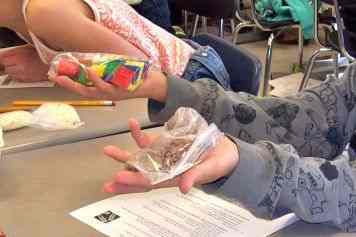

MedFriendly®


Abarognosis
Abarognosis is the loss of the ability to
appreciate the weight of objects held in the hand
or appreciate the difference between objects of
different weights. For example, the person would
not be able to tell purely by touch alone (e.g.,
with the eyes closed or hands behind one’s
back) if the object (e.g., tennis ball) in the right
hand was heavier than the object (e.g., baseball)
in the left hand.
When the primary senses are still intact, this
problem is caused by damage to the parietal
lobe of the brain on the opposite side of the
affected hand.
A child with abarognosis would not be
able to tell the difference between the
weights in each hand.
The parietal lobe is the middle area of the top part of the brain and is responsible for
integrating sensory information to form perceptions. The parietal lobe is located on both
sides of the brain.
FEATURED BOOK: Sensation and Perception, 3rd edition
Abarognosis is a form of agnosia. Agnosia is a loss of the ability to recognize a specific
type of sensory input even though the specific sense is not defective. For example, even
though the sense of touch is intact in abarognosis, the person cannot use the sense of
touch to make tactile weight discriminations.
"Where Medical Information is Easy to Understand"™
Agnosia is usually caused by brain injury or damage, particularly in the posterior aspect of the brain.
Abarognosis comes from the Greek word “a” meaning “without,” the Greek word “baros” meaning “weight,”
and the Greek word “gnosis” meaning “knowledge.” Put the words together and you get “without weight
knowledge.















